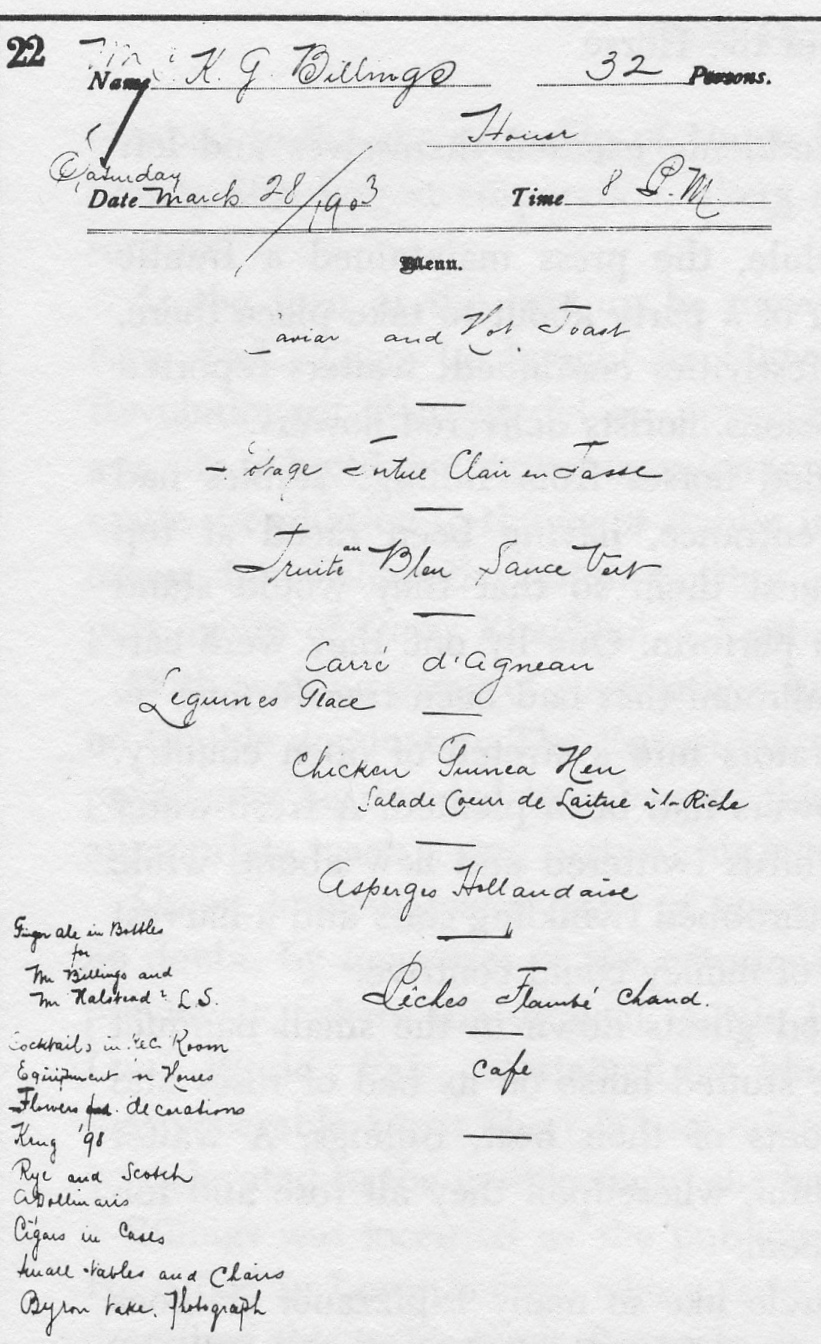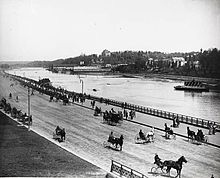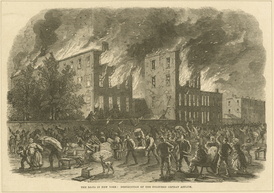
Talk about the unbridled opulence of the Gilded Age. In 1903, wealthy industrialist and equestrian Cornelius Kingsley Garrison Billings opened a private 25,000-square-foot, two-story trotting stable on 196th Street at Fort Washington Road (what is now Fort Tryon Park).
The $200,000 stable featured stucco walls, a shingled roof, and 22 stalls (each with a brass plaque for the name of the equine occupant). The luxury stable housed about 20 carriages, 33 horses, a gymnasium, trophy room, sleigh room, lounging rooms, and living quarters for two families.

To celebrate the opening of his stables, Billings had planned to host an exclusive stag formal dinner at the stable, catered by well-known restaurateur and “society caterer” Louis Sherry. Word of the dinner leaked out, however, and crowds of reporters gathered, hoping to see the stable and wealthy guests.
Billings quietly changed plans, and rented the grand Rococo ballroom on the fourth floor of Louis Sherry’s, a 12-story restaurant with ballrooms and residential suites on the corner of Fifth Avenue and 44th Street.

When the 36 guests, all members of the Equestrian Club, arrived on March 28 at 8 p.m., they found the grand Rocco ballroom decorated as a woodland garden, with trees and shrubbery, real birds, a huge harvest moon hanging from the ceiling, and sod on the floor. The guests mounted well-trained rented horses and faced each other in a circle.
They ate from custom-made dining trays covered in crisp linen that were attached to their saddles. And they sipped champagne through rubber tubes from iced bottles in their saddlebags.

Waiters dressed as grooms in scarlet coats and white breeches — one waiter to a rider — served 14 courses. The menu that evening featured Truite au Bleu, lamb, guinea hen, and flaming peaches. Real grooms stood at each horse’s head to reduce the risk of tossed trays, food, and riders. At the end of the evening, the waiter-grooms brought in elaborate feeding troughs filled with oats so the horses could eat with their riders.
And how did the horses get up to the fourth floor? By freight elevator, of course! At the end of the evening, a vaudeville show took place to entertain the guests while the horses were lowered back down to street level.


Forty years prior to the horseback dinner, the site of Louis Sherry’s was the scene of a horrific fire at the Colored Orphan Asylum.
Founded in 1836, the 4-story orphanage extended from 43rd to 44th Street and housed hundreds of African-American children. On July 13, 1863, during the Draft Riots, the orphanage was burned to the ground. The 233 children in residence were all led to safety by the matron of the home.





I found the horseback dinner story humorous and fascinating but I’m wondering what became of the Colored Orphanage institution? Was it relocated? And what was the ultimate fate of all the orphans?
I’m glad you enjoyed the story of the horseback dinner – it’s one of my favorites!
According to my research, the orphanage was founded in a cottage on W. 12th St. near Sixth Ave. in 1836 by two Quaker women, Anna Shotwell and Mary Murray. The orphanage received a lot of support over the years from people such as the Astors, the Vanderbilts, Harriet Tubman, Frederick Douglass, Eleanor Roosevelt, Lena Horne and Orson Wells. This support allowed the orphanage to provide scholarships for the older orphans to attend college or professional schools.
During the Draft Riots incident, the 233 orphans were brought to the 35th Precinct police station, where they stayed for three days and nights. The orphanage was then temporarily housed at the almshouse on Blackwell’s Island (now Roosevelt Island). A new building was constructed at 51st St. and then four years, the orphanage was moved again to Amsterdam Ave. and 143rd St. Then at the turn of the century, the orphanage relocated to a larger facility in Riverdale in The Bronx.
After World War II, the orphanage began to place children in foster homes. In 1942, as a result of an anti-discrimination law passed in NYC, the orphanage began taking in white children. The name of the facility was then changed to the Riverdale Children’s Association.
Today the Colored Orphan Asylum is known as the Harlem Dowling-West Side Center for Children and Family Services. According to their website, it serves about 2,500 inner-city children and their families a year through foster care and prevention programs.
Years ago I bought a postcard of this extraordinary image of the horsebacked men at dinner and would like to do so again. Do you know where I can buy a card or print ? Thanks, Mick Torney
Mick,
The Museum of the History of New York has this image available in its Collections:
http://collections.mcny.org/C.aspx?VP3=SearchResult_VPage&VBID=24UAYWL4S1GX&SMLS=1&RW=1069&RH=537&RW=1069&RH=537
If you register on the site, you can click on the photo, add it to your cart, and then follow the instructions on their Reproductions and Rights page to request a print:
http://collections.mcny.org/Rights
Thanks for your comment — hope this helps!
[…] took place on March 26, 1883, was one of the most incredible parties that New York had ever seen (C.K.G. Billings’ opulent Horseback Dinner was still 20 years […]
Good day! I know this is kinda off topic but I was wondering if you knew where
I could gget a captcha plugi for my comment form?
I’m using the same blog platform as yours and I’m having trouble finding one?
Thanks a lot!
Sorry, but I’m not sure what this is.
[…] 1907, C.K.G. Billings, the multi-millionaire equestrian renowned for his C.K.G. Billings “Horseback Dinner” of 1903, moved into the lavish Fort Tryon Hall overlooking Fort Washington Avenue and Riverside Drive. He […]
[…] by 165th Street, the Harlem River, Dyckman Street, and the Hudson River. It also included the Harlem River Speedway, between 155th and […]
[…] 1903: The $50K Horseback Dinner at Louis Sherry’s […]